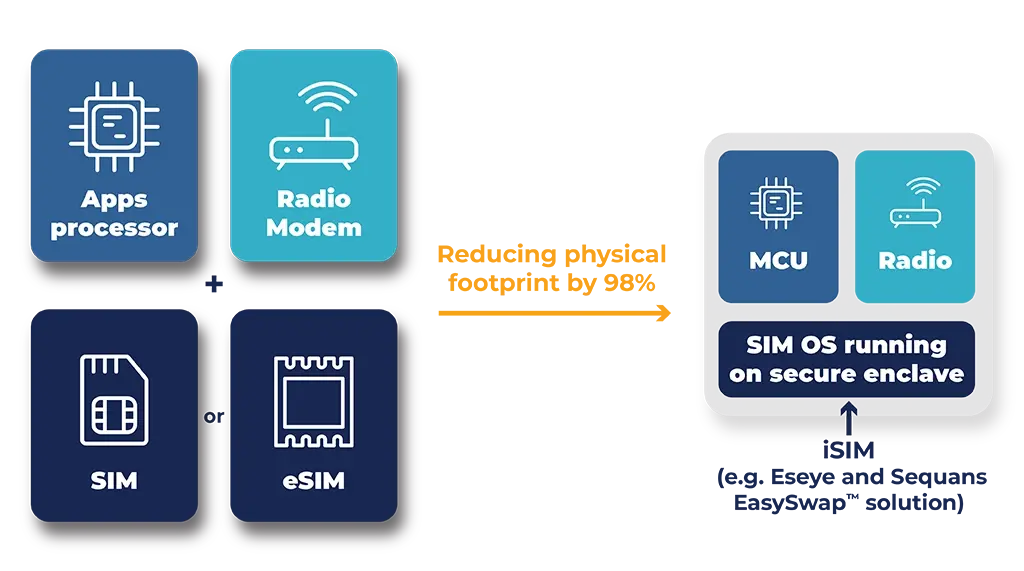IoT Explained
07 August 2023
Reading Time: 2 mins
IoT Explained
07 August 2023
Reading Time: 2 mins

Istvan Lajtos
Head of Product Management
LinkedIniSIM stands for “Integrated SIM” and is an evolution of SIM technology where cellular connectivity and subscriber identity management functionality are integrated into a System-on-Chip (SoC).
Unlike traditional physical SIM cards that need to be inserted or embedded into a device, moving the SIM into a SoC reduces the footprint required on the device for connectivity components.
A SoC for cellular connectivity would typically include a microcontroller, cellular modem and the SIM, which includes the SIM operating system, applications and a secure vault for storing sensitive data, such as mobile subscription identifiers.

The purpose of SIMs is to ensure that devices authenticate and connect securely and reliably to networks and the cloud. Removeable and embedded SIMs are hosted in exceptionally secure chips, similar to those used in bank cards. They’re designed – and tested – to resist highly sophisticated physical and logical attacks.
The challenge for SoC manufacturers is to design chips with advanced security mechanisms that can detect possible attacks and provide the same levels of resistance as existing SIMs.
To meet the security requirements, the iSIM is contained within a Tamper Resistant Enclave (TRE), also known as a secure enclave. Recognised by the Trusted Connectivity Alliance, a TRE uses hardware and low-level software capabilities to provide hosting for secure applications and their confidential and cryptographic data.
SoC manufacturers need to achieve GSMA certification for their iSIM chips if the technology is going to be trusted and adopted widely.
Built within a secure enclave in the SoC to GSMA specifications, iSIMs provide the same levels of identity authentication, security and seamless connectivity as embedded SIMs.
But the benefits of iSIM technology over SIMs of other form factors can also address issues that are holding IoT back.
For any connected device to deliver on its promise, it must have access to a secure, reliable connection. Are you looking to produce and deploy IoT devices but not sure which connectivity solution you need?
Our article, “Cellular IoT Connectivity: What Business Leaders Need to Know” provides valuable insights for achieving success in cellular IoT. It covers topics such as selecting the optimal network, maximising coverage and uptime, and addressing connectivity design considerations for your device.
Learn more about Sequans easySWAP with Eseye AnyNet Connectivity Solution which delivers the world’s first global, secure and end-to-end commercial iSIM for IoT.
Read Solution Paper
Istvan Lajtos
Head of Product Management
LinkedInBuild the IoT estate that meets your needs now – and ten years from now. It’s why global leaders trust Eseye.